Woodlands
See towering Coast Redwoods, Giant Sequoias, Norfolk Island Pines and the 'dinosaur plant', the Wollemi Pine.
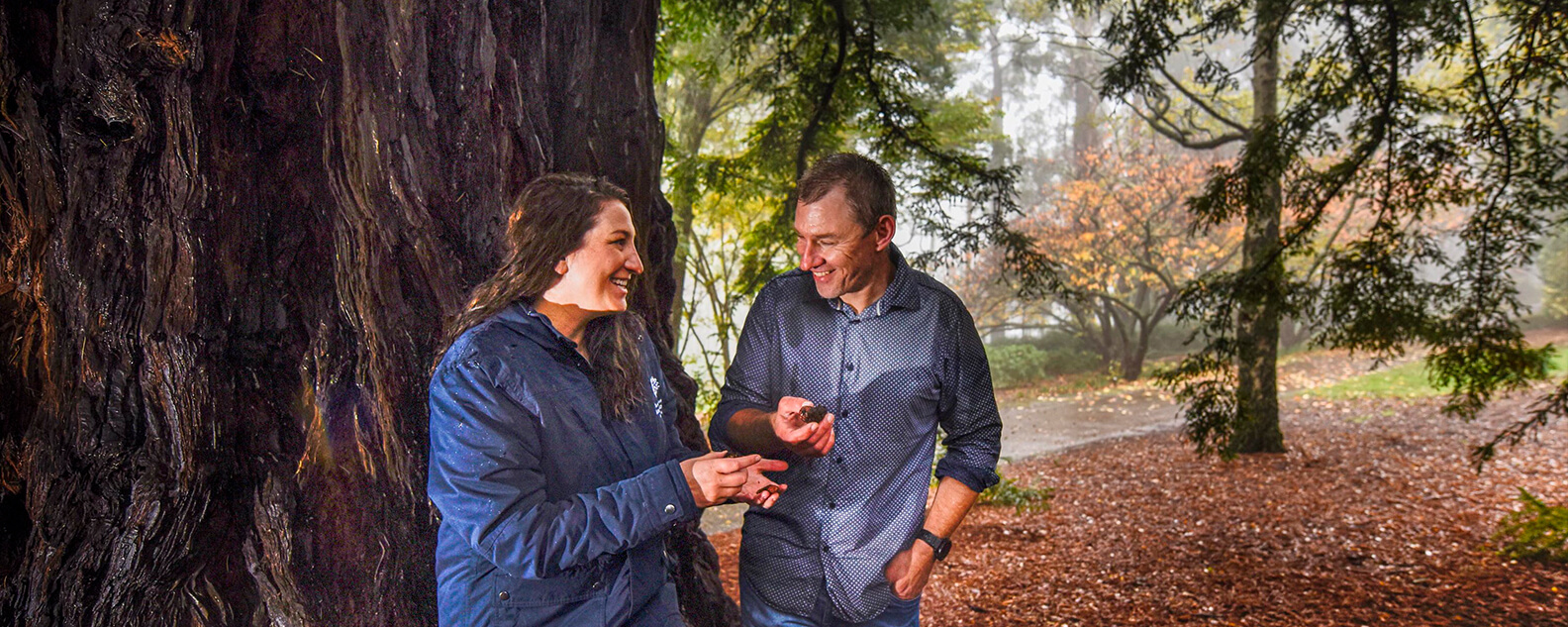
Plant Explorer Walk
While we often take for granted the blooming beauties that grace our gardens – well-known genus such as camellias, magnolias, rhododendrons and hydrangeas - the story of their ‘discovery’ in remote pockets of Eastern Asia and the explorers who brought them to prominence in the West is lesser-known.
The Plant Explorer Walk tells the stories of 14 of these intrepid plant hunters and their adventures. There’s no denying the bravery, passion and knowledge of these botanists who often risked their lives and endured hardship in the pursuit of these rare and beautiful plant trophies. We continue to work towards acknowledging the assistance, guidance and knowledge given to many of the western plant collectors by Indigenous people, First Nations Peoples and colonised cultures.
Winding along a cool, shady pathway planted with more than 400 of the species in question, the Plant Explorer Walk is itself a journey of discovery, an interpretive trail that encourages visitors to pause, read and learn about plant diversity, human endurance and the origins of both common and rare garden plants.
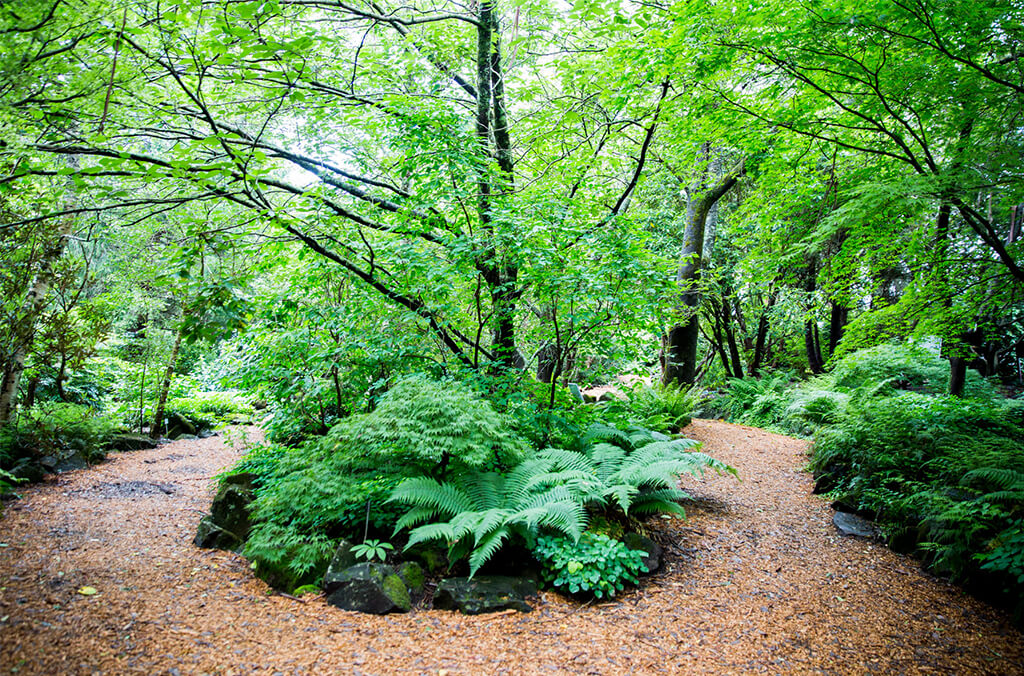
On the Plant Explorer Walk you can read about plant diversity, human endurance and the origins of common and rare garden plants.
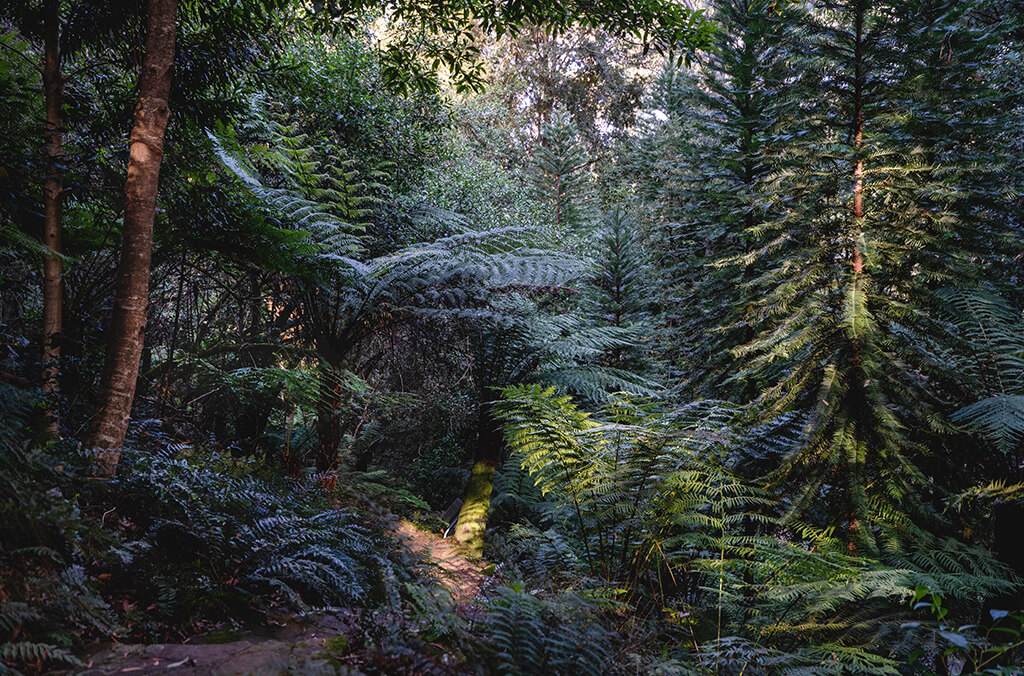
Take a journey through time, past lush rainforest plants that trace their origins to when dinosaurs still roamed the earth.
Gondwana Walk and Wollemi Pines
Gondwana was a super-continent that broke up between approximately 180 and 45 million years ago, forming the landmasses of Africa, South America, India, Antarctica and Australia, the latter two being the last to separate. Gondwanan links between these Southern Hemisphere continents can be found in similar geographic features, fossils and plant and animal species that share common ancestors.
Located on the south-east edge of the Blue Mountains Botanic Garden, the Gondwana Walk is literally a journey through time, taking you under towering eucalypts and past lush rainforest plants that trace their origins to this prehistoric time when dinosaurs still roamed the earth.
Amongst the species on display is a true Australian icon – the Wollemi Pine, one of the world’s rarest and oldest tree species. Presumed extinct, a lone stand of these ‘dinosaur trees’ was discovered in 1994 in a rugged canyon in the Wollemi National Park. While the exact location of these wild pines remains a closely guarded secret, the species has been successfully propagated, with the Blue Mountains Botanic Garden playing a crucial role in saving this ‘living fossil’ from extinction.
A towering conifer from the plant family Araucariaceae, the Wollemi Pine features pendulous, dark green foliage and bubbly bark, and can grow to a height of around 40 metres in the wild with multiple trunks. One of the first places in the world where propagated seedlings were planted, the Blue Mountains Botanic Garden now boasts an extensive collection of these ancient trees planted in both cultivated and natural areas of the Garden, with some of the tallest and most impressive examples found along the Gondwana Walk.
Araucaria Lawn
Located below the Rock Garden and to the west of the Brunet Garden is a sloping lawn featuring plantings of the Araucariaceae family. The towering species on display include Norfolk Island Pines, Bunya Pines, Hoop Pines and some rare pines from New Caledonia, as well as the superstar of the Blue Mountains Botanic Garden, the Wollemi Pine. Of the four genera in this family, the ‘dinosaur tree’ Wollemia is the newest addition. Following its rediscovery in the wild in 1994 after being presumed extinct, botanists from the Botanic Gardens of Sydney verified it as a new genus closely related to araucaria and agathis.
The large Wollemi Pine in the centre of the lawn was one of the first propagated and planted at the Blue Mountains Botanic Garden. Its exposed location in full sunlight has resulted in earlier coning than those found along the Gondwana Walk.

Botanists 'rediscovered' the Wollemi Pine in the wild in 1994. The large Wollemi Pine in the centre of the lawn was one of the first to be propagated and planted.

This garden replicates a genuine North American conifer forest, a cool and shady retreat where every sense is stimulated.
Conifer species
With more than 100 trees on display including magnificent Coast Redwoods, Giant Sequoias, and rare species of international significance this garden replicates a genuine North American conifer forest, a cool and shady retreat where every sense is stimulated.
Look up to admire the towering trunks, spotting birds and wildlife in the upper branches; while the understory is also a rich habitat, particularly after rains when fungi is scattered under the trees including, on the rare occasion, the glow-in-the-dark fungus Omphalotus nidiformis.
A system of secondary pathways through the forest leads you off the main path, allowing visitors the opportunity to immerse themselves into a forest-like environment.
With many of the North American conifer species under threat from bio-security threats such as pine beetles, the Blue Mountains Botanic Garden – as a horticultural island within an island - is well placed to serve as a bio-refuge for threatened species, ensuring their long-term conservation.
Eurasian Woodland and De Ferranti Shelter
The dense foliage of oak, ash and birch trees in the Eurasian Woodland, especially during Autumn when the canopy forms a crown of gold and shades of russet, makes this a particularly appealing place to linger.
Nestled amongst the trees is the De Ferranti Shelter, donated by a generous family with long ties to the Royal Botanic Garden Sydney and the Foundation and Friends of the Botanic Gardens.
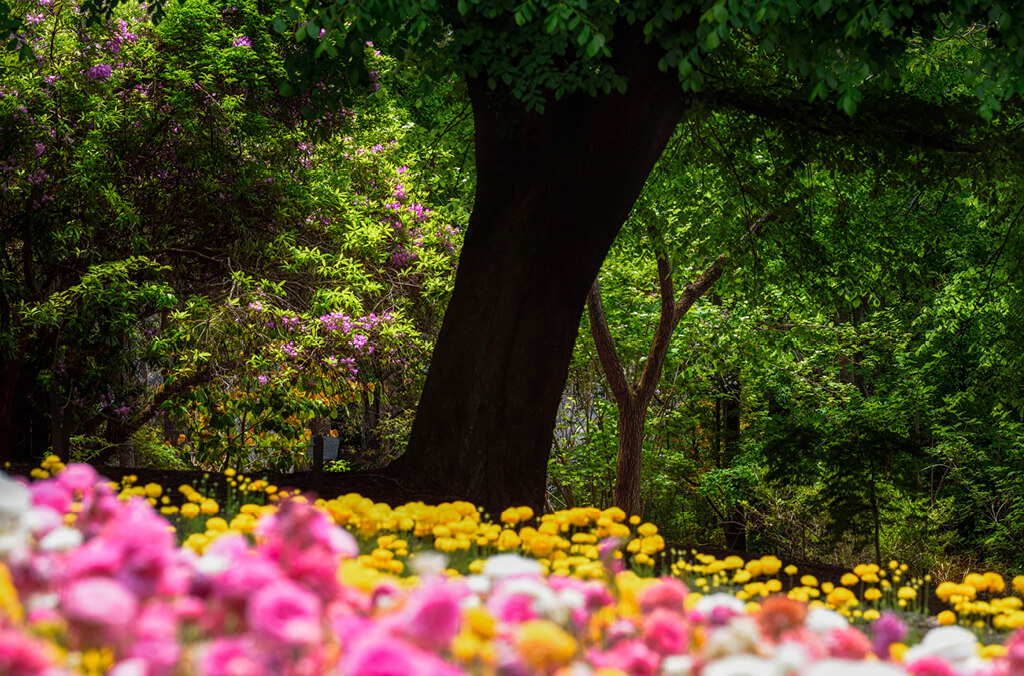
During Autumn the Eurasian Woodland forms a crown of gold and shades of russet.
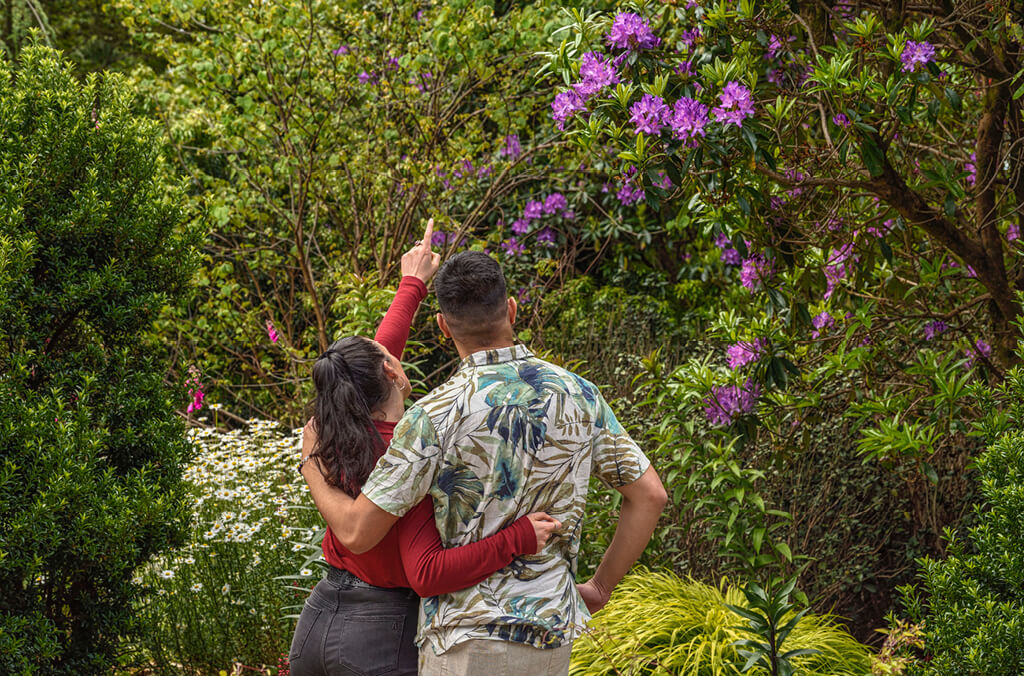
the Garden's Rhododendron collection is a major attraction during their peak in spring.
Rhododendron species
Rhododendrons are an unofficial botanical symbol of the Blue Mountains, with the cool, misty climate and high altitude ideal for growing the dramatic East Asian evergreen. Vibrant clusters of red, pink and magenta add a pop of colour in private and public gardens throughout Spring, while in the upper mountains town of Blackheath, the genus is celebrated with its own festival!
With a plethora of rare and beautiful varieties on display, the Rhododendron collection at the Blue Mountains Botanic Garden Mount Tomah does not disappoint, and is a major attraction during their peak in Spring.